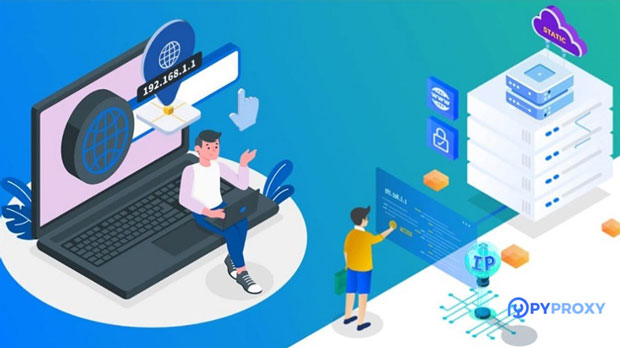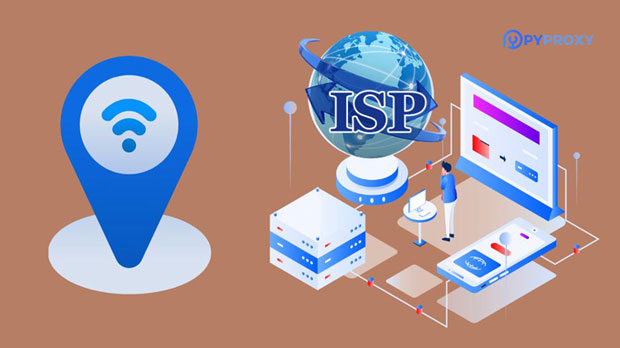When discussing proxy solutions, the SOCKS5 protocol often comes up due to its flexibility and efficiency. PYPROXY, as a popular proxy provider, has generated considerable interest for its claims of supporting advanced proxy features, including rotating proxies. But does PyProxy truly offer SOCKS5 protocol support for rotation? In this article, we will delve into the details of PyProxy’s capabilities, analyzing its approach to rotating proxies with SOCKS5, the advantages of using this protocol, and how it compares to other proxy options on the market. We will also explore the practical applications and value that rotating sock s5 proxies can bring to users. Understanding SOCKS5 Proxies and RotationBefore diving into whether PyProxy supports rotating SOCKS5 proxies, it's important to understand what SOCKS5 proxies are and why rotation is an essential feature for many users.SOCKS5 is the latest version of the SOCKS (Socket Secure) protocol, a type of proxy server that relays internet traffic on behalf of a client, acting as an intermediary between the client and the internet. Unlike HTTP or HTTPS proxies, SOCKS5 can handle all types of internet traffic, including POP3, FTP, and even UDP. The benefits of SOCKS5 include support for authentication, greater security, and the ability to bypass geo-restrictions more effectively than other proxy types.Proxy rotation, on the other hand, refers to the use of multiple IP addresses by the same proxy server to change the client’s perceived IP address over time. This is especially important for tasks that require anonymity or the avoidance of rate-limiting, such as web scraping, account creation, or managing multiple social media accounts.PyProxy's Capabilities: Does It Support SOCKS5 Rotation?PyProxy is known for offering a wide range of proxy solutions, including HTTP and SOCKS5 proxies. While it supports SOCKS5 for individual connections, the key question here is whether it provides support for rotating SOCKS5 proxies. Rotation in proxies allows users to automatically switch between different IP addresses, a feature that enhances privacy and security.Currently, PyProxy does provide rotating proxies, but it is essential to clarify how this works in the context of SOCKS5. PyProxy offers users the ability to rotate between multiple IP addresses, with some configurations allowing for SOCKS5 protocol support. However, whether the rotation is done automatically or requires manual configuration depends on the specific plan or service level chosen.It is crucial to distinguish between static and rotating proxies. static proxies assign a single IP address for extended use, while rotating proxies change the IP address at set intervals, helping to avoid detection by websites or services. PyProxy’s rotating proxies are ideal for tasks requiring high anonymity and frequent IP changes.The Advantages of SOCKS5 RotationUsing rotating SOCKS5 proxies comes with several advantages, particularly for those engaged in activities such as web scraping, managing multiple accounts, or accessing region-restricted content.1. Enhanced Anonymity and Security: By frequently changing IP addresses, rotating SOCKS5 proxies make it difficult for websites to track the user's actions or identify them based on their IP address. This increased level of anonymity is crucial for maintaining privacy online.2. Bypass Geo-restrictions: Many websites or services impose regional access restrictions based on IP addresses. By rotating SOCKS5 proxies across different locations, users can bypass these geo-blocks and access content from anywhere in the world.3. Avoid IP Bans and Rate Limiting: Websites, especially e-commerce platforms, often monitor IP addresses for suspicious activity such as rapid requests, multiple logins, or bulk account creation. Rotating IPs helps avoid triggering rate-limiting measures or getting blocked.4. Improved Performance in Web Scraping: For users who engage in web scraping or data collection, rotating SOCKS5 proxies provide consistent and stable connections without the risk of encountering IP bans. This ensures uninterrupted access to data without being detected.Challenges with SOCKS5 Rotation in PyProxyDespite the advantages, there are certain challenges associated with using SOCKS5 rotating proxies in PyProxy, and these challenges should be considered before making a decision.1. Complex Configuration: While PyProxy supports SOCKS5 rotation, setting up the service may require some technical expertise. Users may need to configure the proxy rotation manually or set up certain features based on their needs. Without a proper understanding of the system, users might face issues like connection failures or performance degradation.2. IP Pool Limitations: The effectiveness of SOCKS5 rotation depends largely on the size and diversity of the proxy ip pool. A limited pool of IP addresses could lead to repetitive patterns, potentially causing detection by advanced systems. PyProxy’s proxy pool size and diversity are essential factors in how effectively rotation works.3. Cost Considerations: Advanced proxy features, including rotating SOCKS5 support, may come at a higher cost. Depending on the user's requirements, these services could be priced higher than standard proxies, which may be a consideration for businesses or individuals on a budget.4. Speed and Latency: As rotating proxies frequently change IP addresses, there can be a slight increase in latency or a decrease in speed, especially if the proxy pool contains many slow or low-quality IPs. Users must ensure that the chosen service delivers the required speed for their tasks.How PyProxy Compares to Other Proxy ProvidersWhen compared to other proxy providers that offer SOCKS5 support, PyProxy stands out in several ways. However, the key difference lies in how PyProxy handles rotating proxies, particularly the SOCKS5 protocol.Some proxy providers offer rotating proxies as a standard feature, including SOCKS5 rotation, while others focus solely on static IP addresses. PyProxy provides users with the flexibility of both static and rotating proxies, with some plans offering automatic IP rotation. However, for users seeking seamless and automatic SOCKS5 rotation with minimal configuration, alternative providers may offer more streamlined solutions.Additionally, users need to consider factors such as proxy pool size, speed, customer support, and pricing before deciding which provider best meets their needs. PyProxy excels in flexibility, but its competitors may offer more specialized services or better automation features.Conclusion: Is PyProxy Right for Rotating SOCKS5 Proxies?PyProxy does offer rotating proxies with SOCKS5 protocol support, but the level of functionality depends on the chosen plan and configuration. Users interested in advanced features like automated rotation, a large proxy pool, and consistent performance should carefully evaluate PyProxy’s offerings against their specific needs. While PyProxy can be a reliable solution for rotating SOCKS5 proxies, users should be aware of the technical challenges, potential cost, and speed considerations before opting for this service.Ultimately, whether PyProxy is the best choice for rotating SOCKS5 proxies depends on the user's objectives, the complexity of the tasks at hand, and the need for anonymity and security. With the right setup, PyProxy can provide a valuable tool for those requiring flexible and secure proxy solutions.
Aug 15, 2025

































































